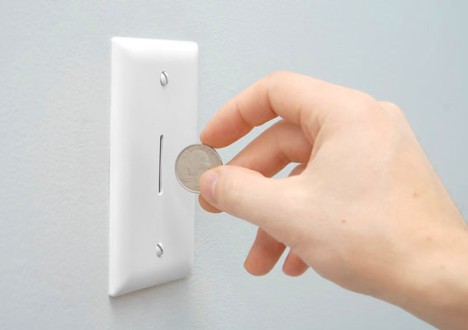
9 ways to keep your energy bills down!
 No one likes wasting money, especially in these tough economic times. So it certainly makes sense — dollars and cents — to make a small investment of time and supplies to close up those heat-wasting air leaks around your home. It’ll pay back big dividends in reduced energy bills and a warmer, more comfortable house this winter. So let’s look at some of the areas where those drafts may be lurking, and see how to take care of them.
No one likes wasting money, especially in these tough economic times. So it certainly makes sense — dollars and cents — to make a small investment of time and supplies to close up those heat-wasting air leaks around your home. It’ll pay back big dividends in reduced energy bills and a warmer, more comfortable house this winter. So let’s look at some of the areas where those drafts may be lurking, and see how to take care of them.
1. Doors and windows: This should be an obvious one. If you can see gaps between your siding and your windows or exterior doors, close them up with a bead of clear or paintable acrylic latex caulk. Larger gaps can be filled with foam backer rod before applying the caulking.
2. Exterior penetrations: Some of these areas are going to be obvious, while some may take a little bit of searching. Some examples of exterior penetrations where air can leak into the house include exterior faucets, dryer vents, exterior electrical outlets, exterior light fixtures, holes that have been drilled for phone and TV cables, conduit penetrations, exit points for plumbing drains, and penetrations for air conditioning lines. Closing these penetrations may require a variety of different techniques, including caulk, expanding spray foam, or, in the case of electrical boxes and fixtures, specific gaskets that are designed to fit the boxes.
3. Exhaust-vent covers: Dryer vents, range hood vents, bath fan vents, and other interior ventilation equipment typically terminate outside the house in a plastic or metal cover that has one or more louvers on it. The louvers are designed to be in the closed position whenever the fan is not in use, so that outside air doesn’t leak in. Check all of these louvers to be sure they’re closing completely, with no air leaks. If they aren’t, you can adjust the spring tension to hold them closed more tightly; add foam weatherstripping tape for a more air-tight seal; or replace the entire vent cap with a new one.
4. Gaps around interior vents and recessed lights: Inside your home, heated air can be leaking out around that same ventilation equipment, where vent pipes pass through the walls or ceiling, or where vent covers meet wall and ceiling surfaces. Recessed light fixtures can also be real air-leakers. Around the vent pipes and recessed light cans, seal any gaps with caulking. For the vent covers and recessed light covers, remove the covers, then adjust the springs and/or add foam weatherstripping tape to create a tight seal between the cover and the ceiling.
5. Heat-duct penetrations: Gaps around heating-duct cans where they pass through the floor or wall allow cold air to enter from the crawl space, while gaps around ceiling-duct cans allow heated air to escape into the attic. To close those drafts, first remove the register, then use a combination of caulking and/or metallic duct sealant tape to close any gaps between the sheet metal cans and the floor, wall or ceiling surface.
6. Fireplaces and woodstoves: Lots of gaps can occur around these appliances. With a conventional fireplace, keep the damper closed except when burning a fire to prevent heated air from escaping up the chimney. Consider investing in a set of air-tight doors, which close off the air leaks and also make your fires more efficient. Look for gaps around woodstove and gas fireplace flue pipes, and air leaks around masonry chimneys. Use a metal collar if necessary around flue pipe penetrations, and seal gaps with heat-resistant sealant specially formulated for this application.
7. Attic and crawl space hatches: These can be real air losers if they’re not weatherstripped, so take care of that with some foam tape. Make sure the hatches are insulated as well.
8. Interior doors to unheated spaces: If you have any interior doors that lead to unheated spaces, including basements, garages or attics, be sure the doors are weatherstripped to prevent air leakage. If possible, replace older, hollow-core doors with solid-core or, better yet, insulated metal doors.
9. Sill plates and penetrations: This one’s not as easy to deal with, but it’s well worth the effort to try to do whatever you can with it. Air can leak both into and out of the house through gaps where the sill plate meets the foundation or the siding, and around plumbing and wiring penetrations drilled through wall plates in various areas. If you have a gap between your siding and the bottom of your exterior wall, especially in older homes where the use of sill sealers was not a common practice, consider closing up this big air gap with a bead of caulking or expanding foam. In the basement, crawl space and attic, if you can access any of the pipes and wires that pass through the wall plates, seal the penetrations with expanding foam.
Call us today to view our new home plans: 713-539-0048 – Sign up for our New Home Buying Tips
Visit our website: www.fairmonthomes.net
Tour our model home – NEW model home NOW AVAILABLE 3903 Whispering Woods – Crystal Lakes Estates


Sorry, the comment form is closed at this time.